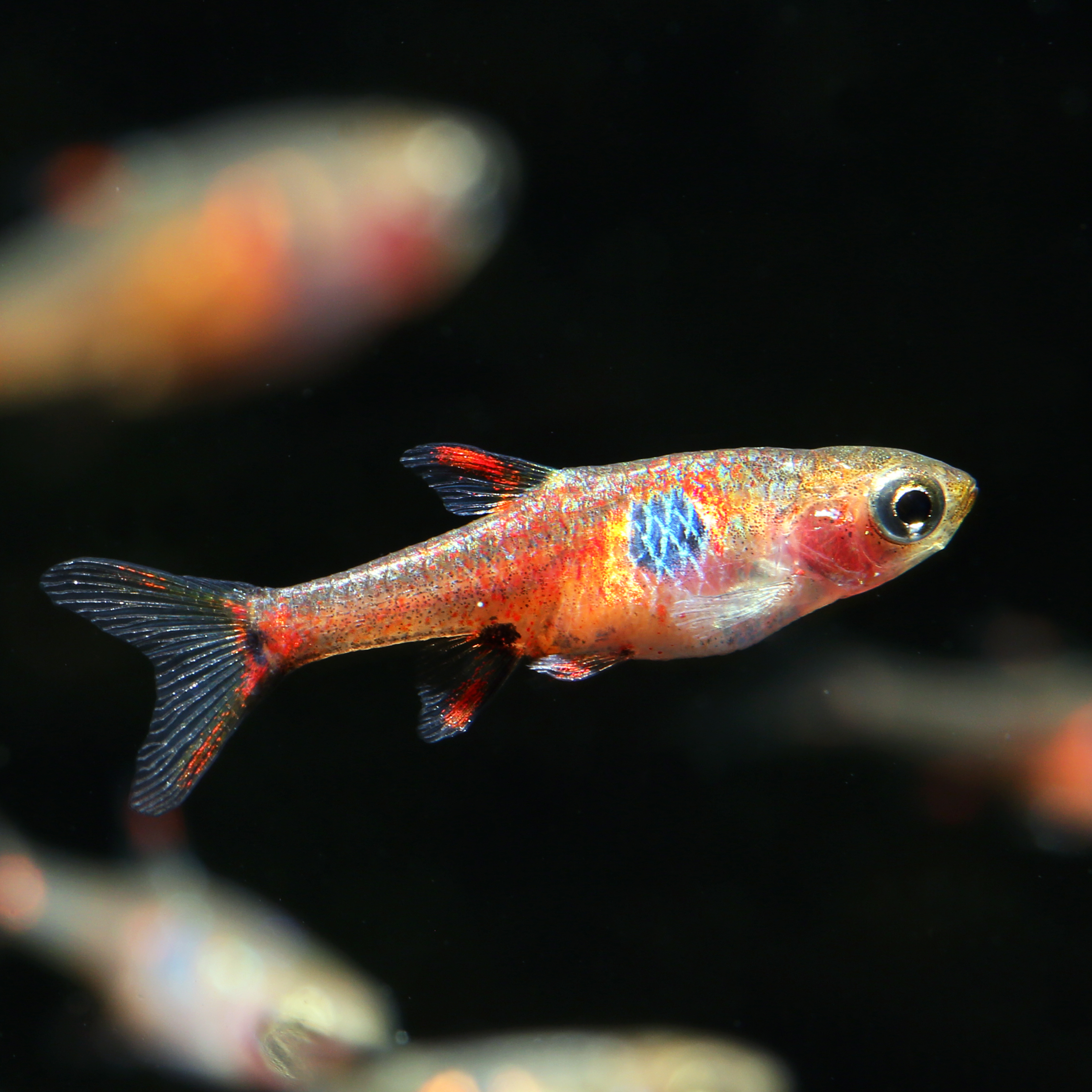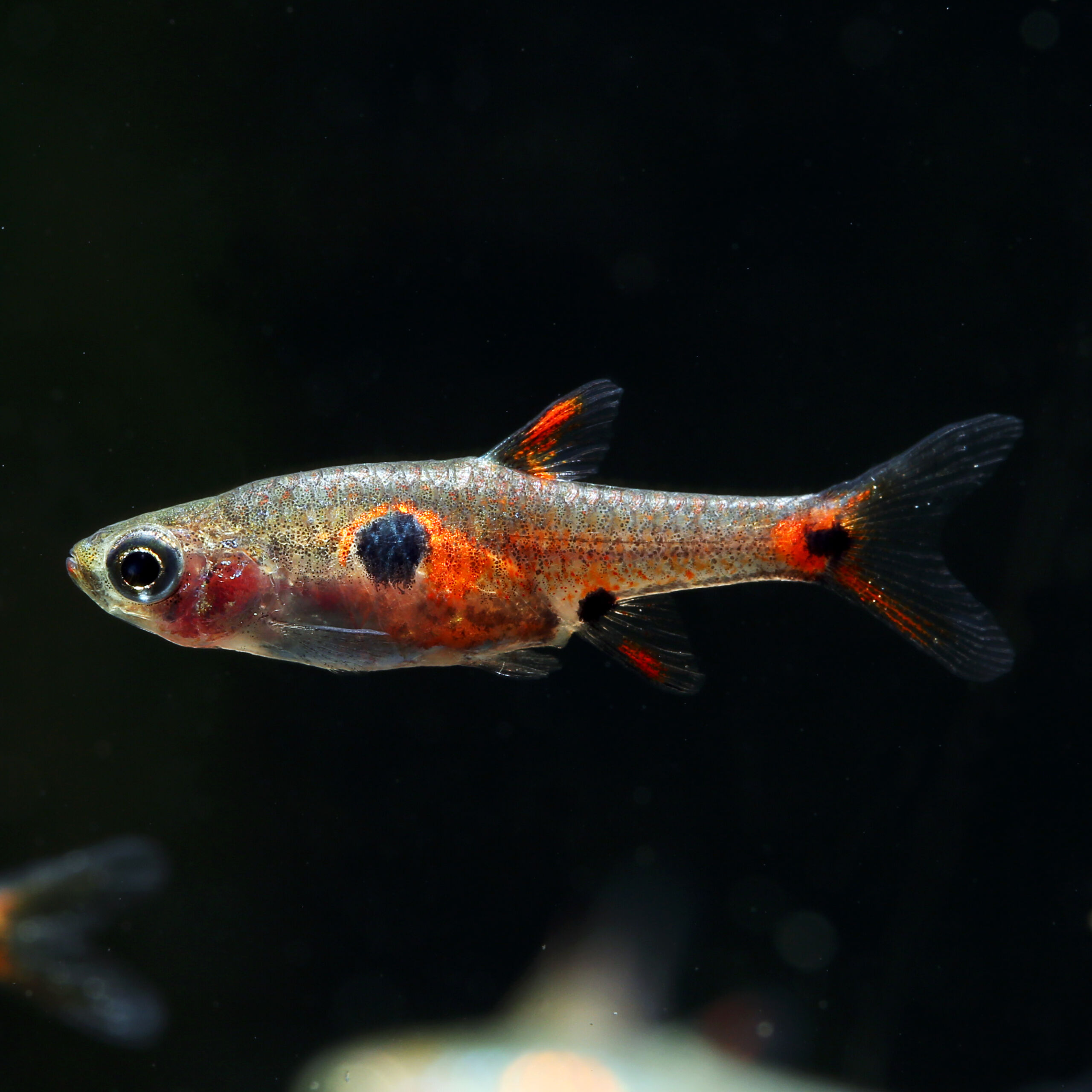Add to wishlist
Add to wishlist
Strawberry Rasbora
Boraras naevus
With a maximum size of around 2.5cm, the beautiful Strawberry Rasbora is one of the smallest aquarium fish.
- pretty schooling fish from Southeast Asia
- bright red coloring
- only approx. 2.5cm long
1 in stock
 Delivery in a few working days
Delivery in a few working days
 Free shipping from €60 across Austria
Free shipping from €60 across Austria





Important data
Origin
South East Asia (Thailand)
They are
bred regionally
Difficulty
easy
Size
up to 2.5cm
Shipping size
approx. 1-1.5cm
Lifespan
about 6-10 years
Quantity
from 10 individuals
Diet
omnivorous
Tank area
middle
Tank size
from 60 liters
Temperature
23-26°C
pH value
5.5-7.0
Water hardness
3-10°dGH
Product description & details
The Strawberry Rasbora is a danios up to 2.5cm tall, which is native to Thailand, Borneo, Sumatra and Malaysia and can be found there in swampy areas such as ponds or rice fields. These little rasboras owe their name to the bright red coloring, which is particularly intense in the males.
Care in the aquarium
Keeping the Strawberry Rasbora is possible in an aquarium of 60 liters or more. This should have dense vegetation around the edges, which however leaves enough swimming space for this lively fish. Subdued lighting and a dark substrate not only ensure that the little rasboras feel safe, but also bring out the great coloring particularly well. As a schooling fish, it should also be kept with at least 10 members of its species. Soft to medium-hard (black) water rich in humic substances with a temperature between 23 and 26°C is optimal.
Feeding
Being omnivorous, the Boraras nevus is not too picky. However, due to its small mouth, it can only be fed very small or fine types of food. Small frozen and live food such as fresh Artemia nauplii or copepods are preferred, but fine flake food is also accepted.
Sexual characteristics and breeding
Distinguishing the genders of the Strawberry Rasbora is not too difficult. The male differs from the female in its significantly stronger coloring and somewhat slimmer body. Breeding the Boraras nevus in the aquarium is not that easy. Soft, acidic water is ideal. The addition of humic substances, for example in the form of sea almond tree leaves, walnut leaves or alder cones, also prevents the eggs from becoming fungal. The willingness to spawn can be increased by changing the water with cooler water and giving more live food. As free spawners, females prefer to release their eggs between fine-feathered plants, where they are fertilized by the male. There is no brood care and there is a risk that the parents will eat their own eggs, which is why there should be a spawning grid or, better yet, a separate breeding tank. Newly hatched Strawberry Rasbora are very small and can be fed with dust food and infusoria.






